
In the high-temperature field of modern industry, fused cast AZS blocks, as a key refractory material, bear the important mission of resisting high temperature, corrosion, and mechanical stress. Its performance is directly related to the efficiency, quality, and safety of industrial production. For a long time, researchers and engineers have been exploring ways to improve the performance of fused cast AZS blocks, and gradually found that its microstructure is like the cornerstone of a building, although hidden inside, the overall performance plays a decisive role. In this paper, the microstructure of the fused cast AZS block is discussed in depth, and the characteristics and formation mechanism of its crystal phase, glass phase, and pores are described. The close relationship between the microstructure and the excellent properties of the fused cast AZS block such as high-temperature strength, thermal stability, and erosion resistance is analyzed in detail, to reveal the significance of the microstructure as a key support for the performance of the fused cast AZS block.
The crystal phase in fused cast AZS block is the core component of its microstructure, mainly including the corundum phase (α-Al2O3), mullite phase (3Al2O3 · 2SiO2), zirconium corundum phase (Al2O3-ZrO2), etc. Different crystal phases give different characteristics to fused cast AZS block.

(1) Corundum facies
The corundum phase has high hardness, a high melting point (2050℃), and good chemical stability. In the process of electrowetting, when the alumina in the raw material reaches a certain purity and melting conditions, the α-Al2O3 crystal begins to form. Its crystal structure is a triangular crystal system, and the tightly packed aluminum ions and oxygen ions constitute a stable lattice structure. These crystals, often in columnar or granular form, are interwoven in fused cast AZS blocks, providing high strength and wear resistance to the block body, allowing it to withstand mechanical stress at high temperatures and erosion by materials. For example, in some fused cast AZS blocks used in iron and steel smelting furnaces, the high content of the corundum phase ensures the wear resistance of the block body in the frequent charging and discharging process, effectively extending the service life.
(2) Mullite facies
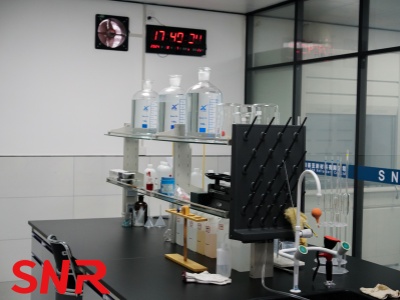 The mullite phase is formed by the reaction of alumina and silica at high temperatures, and its unique needle-like or columnar crystal structure makes it plays a role in enhancing toughness and improving thermal expansion performance in fused cast AZS blocks. The thermal expansion coefficient of mullite is relatively low, and the thermal expansion difference between mullite and corundum can alleviate the thermal stress inside the block body and reduce the generation of cracks when the temperature changes. In the fused cast AZS block used in glass furnaces, the appropriate amount of mullite phase can improve the adaptability of the block to temperature fluctuations, prevent structural damage caused by thermal shock, and thus ensure the continuity and stability of glass production.
The mullite phase is formed by the reaction of alumina and silica at high temperatures, and its unique needle-like or columnar crystal structure makes it plays a role in enhancing toughness and improving thermal expansion performance in fused cast AZS blocks. The thermal expansion coefficient of mullite is relatively low, and the thermal expansion difference between mullite and corundum can alleviate the thermal stress inside the block body and reduce the generation of cracks when the temperature changes. In the fused cast AZS block used in glass furnaces, the appropriate amount of mullite phase can improve the adaptability of the block to temperature fluctuations, prevent structural damage caused by thermal shock, and thus ensure the continuity and stability of glass production.
(3) Zirconium corundum phase
The zirconium corundum phase is a complex crystal phase formed by the introduction of zirconia into alumina, which is commonly found in some electric fused cast AZS blocks with high corrosion resistance. The addition of zirconia changes the crystal structure and improves the stability and hardness of the phase. The zirconium ions in the zirconium corundum phase partially replace the aluminum ions, forming a tighter lattice and enhancing the resistance to corrosive media such as acid and alkali. In non-ferrous metal smelting furnaces, zirconium corundum fused cast AZS block can effectively resist the corrosion of various chemical components in the slag, protect the furnace lining structure, and reduce maintenance costs and downtime.
Although the content of the glass phase is relatively small in fused cast AZS blocks, it plays an indispensable role. It is an amorphous substance formed after the melting of some low-melting point substances in the raw material in the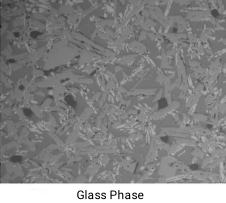 process of electrowetting and is filled between the crystal phases. The glass phase has good fluidity and cohesiveness, which can closely combine the crystal phase to form a whole and improve the density of the block. At the same time, the existence of the glass phase also affects the thermal expansion performance and chemical stability of the fused cast AZS block to a certain extent. At high temperatures, the glass phase can buffer the thermal stress through its viscous flow and reduce the crack propagation caused by uneven thermal expansion. However, if the glass phase content is too high or its chemical composition is unreasonable, it may cause the refractoriness of the fused cast AZS block to decrease and the erosion resistance to weaken. Therefore, precisely controlling the content and composition of the glass phase is one of the keys to optimizing the performance of fused cast AZS blocks.
process of electrowetting and is filled between the crystal phases. The glass phase has good fluidity and cohesiveness, which can closely combine the crystal phase to form a whole and improve the density of the block. At the same time, the existence of the glass phase also affects the thermal expansion performance and chemical stability of the fused cast AZS block to a certain extent. At high temperatures, the glass phase can buffer the thermal stress through its viscous flow and reduce the crack propagation caused by uneven thermal expansion. However, if the glass phase content is too high or its chemical composition is unreasonable, it may cause the refractoriness of the fused cast AZS block to decrease and the erosion resistance to weaken. Therefore, precisely controlling the content and composition of the glass phase is one of the keys to optimizing the performance of fused cast AZS blocks.
The porosity in the fused cast AZS block is also an important part of the microstructure, although the existence of the porosity will reduce the density and strength of the block to a certain extent, the reasonable distribution and size of the porosity can help improve its thermal insulation performance and thermal shock resistance. The formation of pores is related to the purity of the raw material, the gas production during the melting process, and the cooling rate. In the process of electrowetting, the water in the raw material, the gas generated by the decomposition of impurities, and the air involved in the melting process are not completely discharged, and pores are formed in the block body. According to the pore size and distribution pattern, stomata can be divided into closed stomata and open stomata. The closed porosity can effectively prevent heat transfer and improve the heat insulation effect of the fused cast AZS block. The open porosity may become a channel for corrosive media to invade the interior of the block, so it is necessary to control its number and size. By optimizing the production process, such as the use of vacuum degassing technology, the content of pores can be reduced and their distribution can be improved, to improve the strength and corrosion resistance of the block under the premise of ensuring the heat insulation performance.
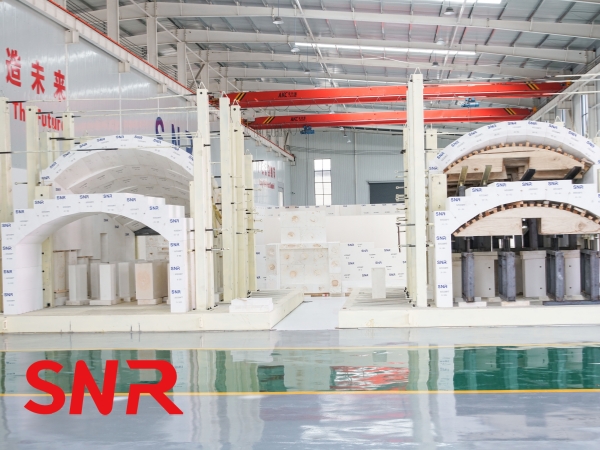
♦High temperature strength
The high-temperature strength of the fused cast AZS block mainly depends on the crystal phase in its microstructure and the bonding mode between them. The high hardness and stable crystal structure of the corundum and mullite phases provide the basic strength support for the block. In high-temperature environments, these crystal phases can maintain their structural integrity and resist the action of external forces. The interweaving and mosaic between the crystal phases form a strong skeleton, making the fused cast AZS block able to withstand pressure at high temperatures, gravity, and material friction. At the same time, the bonding effect of the glass phase also helps to fix the crystal phase together, enhancing the overall strength. When the external force is applied to the fused cast AZS block, the stress can be evenly dispersed through the interface between the crystal phase and the glass phase, avoiding the damage caused by local stress concentration. For example, in the high-temperature zone of the cement rotary furnace, the fused cast AZS block needs to withstand the gravity of the material, the centrifugal force generated by rotation and the chemical reaction pressure at high temperatures, and its good microstructure ensures long-term stable operation under these complex stress conditions, providing a reliable lining guarantee for the production of cement clinker.
♦Thermal stability
Thermal stability is a crucial performance index of fused cast AZS blocks in high-temperature industrial applications, and the microstructure plays a decisive role in its thermal stability. As mentioned above, the low coefficient of thermal expansion of the mullite phase and its matching with the corundum phase make the thermal stress generated inside the fused cast AZS block can be effectively alleviated when the temperature changes rapidly. The particle size and distribution uniformity of the crystal phase also affect the thermal stability. The uniform distribution of the crystal phase can make the thermal stress evenly dispersed in the block body and reduce the generation of stress concentration points. In addition, the presence of the glass phase, through its viscous flow characteristics at high temperatures, can absorb part of the thermal stress and prevent the rapid expansion of cracks. When the fused cast AZS block is cooled rapidly from the high-temperature state, the glass phase can fill the tiny void caused by thermal shrinkage, inhibit the formation of cracks, and improve the thermal shock resistance of the block. In the process of the furnace and cold repair of a glass furnace, the block needs to undergo many large temperature changes, and the thermal stability given by its good microstructure ensures the integrity of the furnace lining, avoids the block peeling and the furnace body damage caused by thermal shock, and ensures the normal glass production.
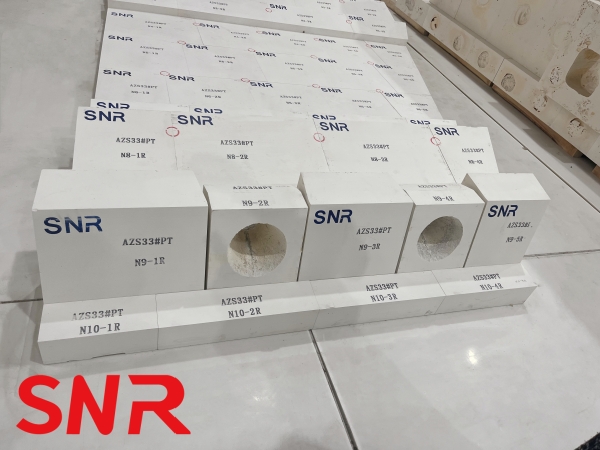
♦Erosion resistance
In many industrial production processes, fused cast AZS blocks will come into contact with various corrosive media, such as slag in iron and steel smelting, molten liquid in non-ferrous metal smelting, and liquid glass in glass manufacturing, etc., and its corrosion resistance is directly related to the service life and production efficiency. The crystal phase composition and structure of the fused cast AZS block have a key influence on the resistance to erosion. The high chemical stability of corundum and zirconium corundum phases makes them resistant to erosion by acidic and alkaline media. In the process of slag erosion, a dense protective film is formed on the surface of the crystal phase to prevent the further diffusion of aggressive ions. The mullite phase also has a certain ability to resist erosion, and its acicular crystal structure can increase the path length of the diffusion of the erosion medium and slow down the erosion rate. The chemical composition and content of the glass phase will also affect the corrosion resistance, if some components of the glass phase can react with the erosion medium to form a high melting point, insoluble compound, you can further improve the corrosion resistance of the fused cast AZS block.
Selection of raw materials
High-quality raw materials are the basis for building an ideal microstructure. For alumina raw materials, products with high purity (Al2O3 content ≥95%) and low impurity content should be selected to ensure that many stable corundum phases can be formed during the electrowetting process. At the same time, controlling the content and purity of other components such as silica and zirconia can precisely adjust the generation ratio of the mullite phase and zirconium corundum phase.
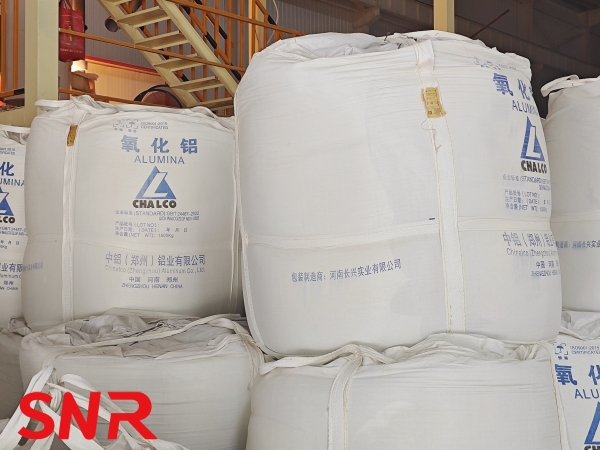
Production process optimization
(1) Electric melting temperature and time control
The temperature and time of electrowetting are the key parameters affecting the microstructure of electrowetting blocks. Increasing the melting temperature can accelerate the melting and reaction speed of raw materials and promote the formation and growth of the crystal phase. Still, a temperature that is too high may lead to excessive crystal growth and increase the glass phase content, thus affecting the performance of the block. Therefore, the melting temperature needs to be precisely controlled according to the raw material formulation and product requirements. For example, in the production of corundum mullite fused cast AZS blocks, the melting temperature is controlled between 1800-2000 ℃, which can ensure the full formation of the corundum phase and mullite phase, and avoid uncontrolled crystal growth. The electrowetting time also needs to be adjusted reasonably. Too long electrowetting time may dissolve and recrystallize the crystal phase, changing its shape and distribution, while too short may lead to incomplete melting of the raw material, affecting the uniformity and density of the block.
(2) Cooling system
The cooling process plays an important role in the final microstructure of the fused cast AZS block. The growth rate and size of the crystal phase and the solidification state of the glass phase can be controlled by the appropriate cooling rate. Rapid cooling can obtain a fine crystal phase, and improve the strength and wear resistance of the block, but may increase the thermal stress and porosity; Slow cooling is conducive to the formation of larger and well-crystallized crystal phases, reducing thermal stress, but may lead to uneven glass phase distribution. Therefore, the segmented cooling method is usually used to cool slowly at the high-temperature stage to promote the growth and uniform distribution of the crystal phase and accelerate the cooling speed at the low-temperature stage to reduce the adverse impact of the glass phase, to optimize the microstructure of the fused cast AZS block and improve its comprehensive performance.
(3) Use of additives
Proper addition of some special additives can effectively regulate the microstructure of the fused cast AZS block. For example, adding a small amount of TiO2 can promote the crystallization of the corundum phase, refine the crystal particles, and improve the strength and thermal stability of the block. In addition, rare earth oxides such as Y2O3, CeO2, etc. can improve the performance of the glass phase, improve its chemical stability and viscosity, enhance the bonding effect on the crystal phase, and improve the erosion resistance of the fused cast AZS block. These additives affect the nucleation and growth mechanism of crystals by changing the physical and chemical environment in the electrowetting process, to achieve precise regulation of the microstructure to meet the special requirements of different industrial application scenarios for the performance of electrowetting blocks.
The microstructure of the fused cast AZS block, as the secret cornerstone of its excellent performance, determines its performance in high-temperature strength, thermal stability, and corrosion resistance through the interaction of crystal phase, glass phase, and porosity. A deep understanding of the internal relationship between microstructure and performance, and precise regulation of microstructure through raw material selection and production process optimization, can effectively improve the performance of fused cast AZS blocks to meet the increasingly demanding needs of modern high-temperature industry. Looking forward to the future, with the continuous progress of science and technology, the research on the microstructure of fused cast AZS blocks will continue to deepen, opening up broad prospects for the development of new high-performance fused cast AZS block materials, and promoting the continuous development and progress in the field of high-temperature industry.
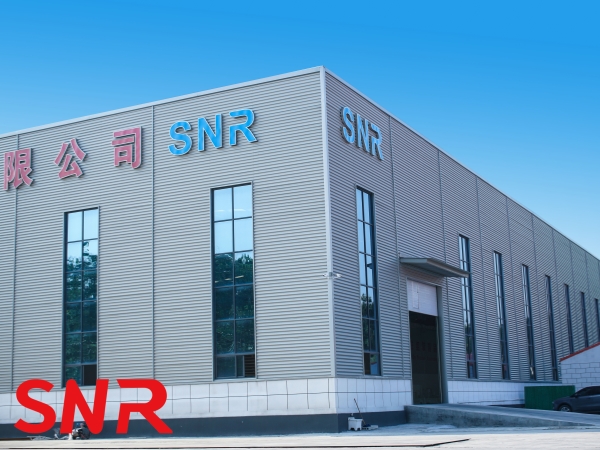
Henan SNR Refractory Co., Ltd(SNR) produces a variety of high-quality fused cast AZS blocks.If you have any needs, please contact us.